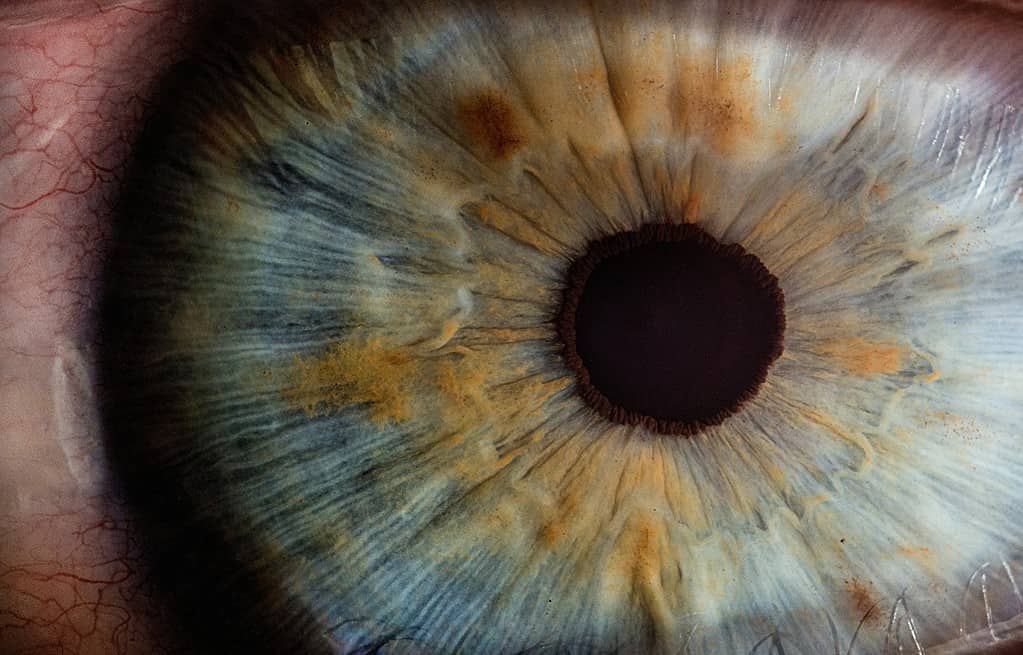The eyes are more than just the window to the soul; they can be the window to the body. They have no immune cells to react negatively to implants, which makes them particularly interesting for cell therapies. And, as an added bonus, eyes are transparent, which allows researchers to easily track what’s going on with any implants.
“The eye is immune-privileged,” author Anna Herland explains. With that in mind, Herland and colleagues at the KTH Royal Institute of Technology and Karolinska Institutet have developed a micro-implant that can be used to deliver cell treatments that treat diabetes.

Eyes are unique
The researchers designed the implant as a wedge fixed in between the iris and cornea. This region is the anterior chamber of the eye (ACE). For the first time, a mechanical device has been placed in the ACE — and, even now, researchers have only done it in mice.
“We designed the medical device to hold living mini-organs in a micro-cage and introduced the use of a flap door technique to avoid the need for additional fixation,” says Wouter van der Wijngaart, professor in the Division of Micro and Nanosystems at KTH.
The device, which measures 240 micrometers long, functions as pancreatic islets (called islets of Langerhans). These islets are clusters of specialized cells in the pancreas that produce and secrete hormones like insulin and glucagon. Through balancing the production of these hormones, they regulate blood sugar levels.
In the study, these islets served as the microtissue model for demonstrating the viability and functionality of biohybrid microstructures. This approach aims to explore advancements in disease monitoring and treatment, specifically for diabetes. Essentially, it’s a way to deliver cell therapy in the one place where the body doesn’t reject it.
“Ours is a first step toward advanced medical microdevices that can both localize and monitor the function of cell grafts. Our design will enable future integration and use of more advanced device functions such as integrated electronics or drug release,” says Herland. “This is a part of a larger effort where we are pushing device technology to monitor the function of transplanted islets,” she continued.
Working as intended
In the tests carried out on mice, the device quickly integrated with the blood vessels without any secondary reactions. It maintained its position for months without causing any major problems.
The device also maintained its position in the living organism for several months. And the mini-organs quickly integrated with the host animal’s blood vessels and functioned normally, Herland says. Per-Olof Berggren, Professor of Experimental Endocrinology at Karolinska Institutet and also a study author, says this is the first time anyone has accomplished something like this.
“The current unit is unique and will among other things form the basis for our continued work to develop an integrated microsystem for studying the function and survival of the islets of Langerhans in the anterior chamber of the eye,” Berggren says. “This is also of great translational importance, as transplantation of Langerhans islands to the anterior chamber of the eye in humans is subject to clinical trials in patients with diabetes.”
The advantage of this eye implant is that it’s easier to monitor and localize if and how the cell grafts are working. The next step is to ensure advanced functionality like drug release or other sensors that can monitor the therapy delivery.
“We have prototypes that can monitor islet function in vitro with electro-optical methods. We are now taking these prototypes for in vivo evaluations. We are also exploring how we can use the devices for drug release locally in the eye, thereby avoiding possible side effects at other sites in the body,” she added.
Journal Reference: “3D-Printed Biohybrid Microstructures Enable Transplantation and Vascularization of Microtissues in the Anterior Chamber of the Eye”, Hanie Kavand, Montse Visa, Martin Köhler, Wouter van der Wijngaart, Per-Olof Berggren, Anna Herland, Advanced Materials, online 10 October 2023, doi: 10.1002/adma.202306686.









